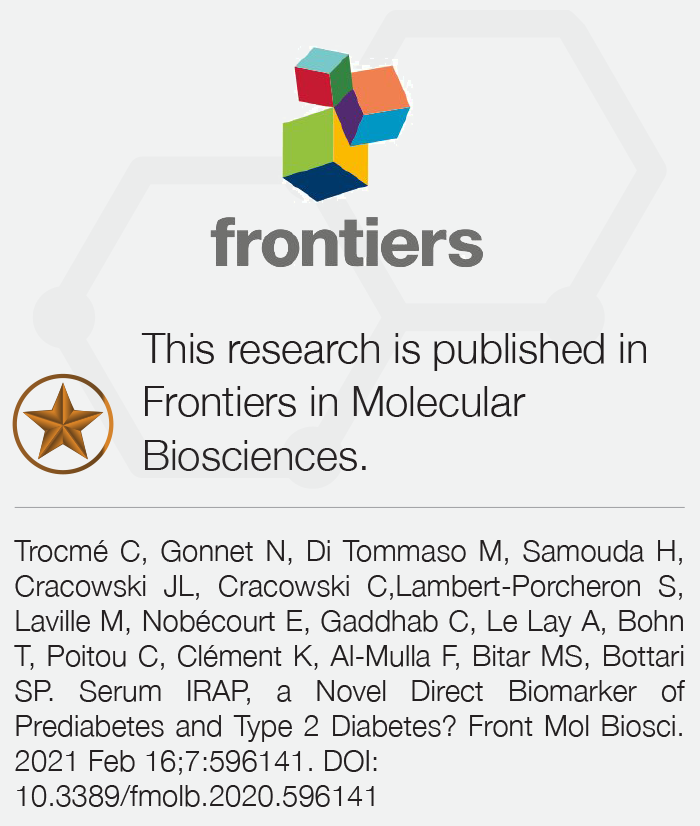IRAP, A novel biomarker of prediabetes and Type 2 diabetes?
Published on 02/07/2021
Type 2 diabetes is increasing worldwide, causing both a health and socioeconomic burden. Fortunately, type 2 diabetes can be prevented if proper intervention is introduced during the early stages of insulin resistance. This may include introducing lifestyle changes or prescribing anti-diabetic drugs, or both. Therefore, screening programs are needed to identify individuals at risk. Currently, however, there is no reliable method that specifically measures insulin resistance to predict the future risk of type 2 diabetes development. All the methods available are based on detecting increased concentrations of insulin and glucose or the consequences of its high concentration. Thus, around 20-60% of diabetic patients are not diagnosed early enough. To solve this problem, Prof. Fahd Al-Mulla’s team in collaboration with Dr. Bottari (Luxembourg) and Prof. Milad Bitar (Kuwait University) suggested that the detection of cellular glucose uptake can indicate insulin sensitivity. Glucose uptake is stimulated by the action of insulin, which when bound to its receptor stimulates the translocation of the glucose transporter storage vesicle to the plasma membrane where it fuses and inserts the transporter there allowing glucose to enter the cell. Interestingly, another protein called IRAP is translocated in the same vesicle along with the glucose transporter.

This protein has attracted the attention of the group because its extracellular domain is enzymatically cleaved and secreted in the blood stream, suggesting that circulating levels of IRAP should reflect the amount of IRAP and GLUT4 trans-located to the plasma membrane in response to insulin, hence insulin sensitivity. Their finding was confirmed in a pilot study using a specific ELISA assay against IRAP that they developed and patented.
Further clinical trials are carried out to validate the use of IRAP as a marker of insulin sensitivity in the clinical arena. By this, the group is providing a tool for early diagnosis of insulin resistance, type 2 diabetes, and gestational diabetes which may reduce the incidence of such diseases. This is the first discovery of a biomarker for pre-diabetes worldwide.


